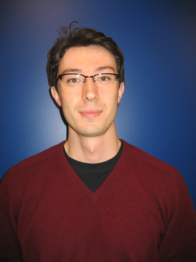Electron driven chemistry in microreactors
Promotion date: 6. November 2009
Promotor: Prof. Dr. Han Gardeniers
| Novel process windows are developed, by the combination of atmospheric pressure plasmas with microreaction technology. The type of plasma used is called non-equilibrium or “cold”, since gas temperatures remain ambient, while electron temperatures can reach a few thousand degrees Kelvin. A gaseous plasma state of the matter was created in microchannels, which were then used for chemical processing and synthesis of nanostructures. In this way it is possible to perform hot temperature chemistry at room temperature. Microreaction technology helps to manipulate the chemical reactions in a more controlled way. |
What is special about your approach in this field of research?
We used microplasmas in confined microchannels for the purpose of chemical synthesis. Also, environmental applications were investigated. The challenge to perform the reactions at low temperatures turned out to be very novel and promising. Research institutes and industries responded positively.
Perhaps most illustrative is a reactor we build up in the Tokyo Institute of Technology, where I spent several months to collaborate. The method was to gain a methanol yield as liquid fuel, with the special idea to do so as cold as possible. This is a contra-intuitive way of thinking. Finally we succeeded to perform well at zero degrees Celsius. The methanol gained is condensed and removed, making the reaction conditions free to form new methanol, and so on.
How did you come into contact with the Mesa+?
A housemate who was a colleague student at Bilkent University, Ankara, told me about the Mesa+ institute and the people working there. So, he recommended Mesa+ to me. I went to visit and discovered good project opportunities were available in which I could perform multidisciplinary research, explore myself and my vision, and to do so together with skilled colleagues, in an open working environment.
When I came to work here, I adapted very quickly. After some months, I started to carry out my first trials and to collaborate with other groups, especially the Catalytic Processes and Materials group. I worked both in the cleanroom, for the fabrication of devices, and in the catalytic process laboratories for testing. As mentioned, I also worked in Tokyo on a collaboration project which resulted in a patent disclosure.
The atmosphere at Mesa+ is very international and social warm. I found the Dutch are very direct in expressing themselves. They are somewhat reserved to intermingle daily work and social life. I adapted to this rather quickly and learned to appreciate this approach.
So, you did really feel part of Mesa+ and the University of Twente!
Yes, even more so, I might say. I was invited to several lectures and poster presentations all around the world. I had the opportunity to discuss my ideas with famous scientist. As part of my talks I always presented a google maps picture of Twente. In Japan a professor in the audience came to meet me and told me that he himself was a post-doc in Twente, 25 years ago.
What are your future plans?
First of all, I am going to continue here in a post-doc project for about one year to come, to finish some promising publications and to develop new ideas that are still at hand.
I plan to continue with my academic career, as I am very interested in solar to fuel conversion with nanostructured materials. Using solar energy to generate fuels like hydrogen or clean hydrocarbon fuels is very interesting and challenging in my opinion.
I applied the Rubicon grant to work on solar energy utilization in Berkeley National Laboratory. It is good to uncover new network lines. My ambition is to have a position as an assistant professor and work with my research group, favourably in basic and applied research in the energy field, catalysis and micro- and nano-technology.

